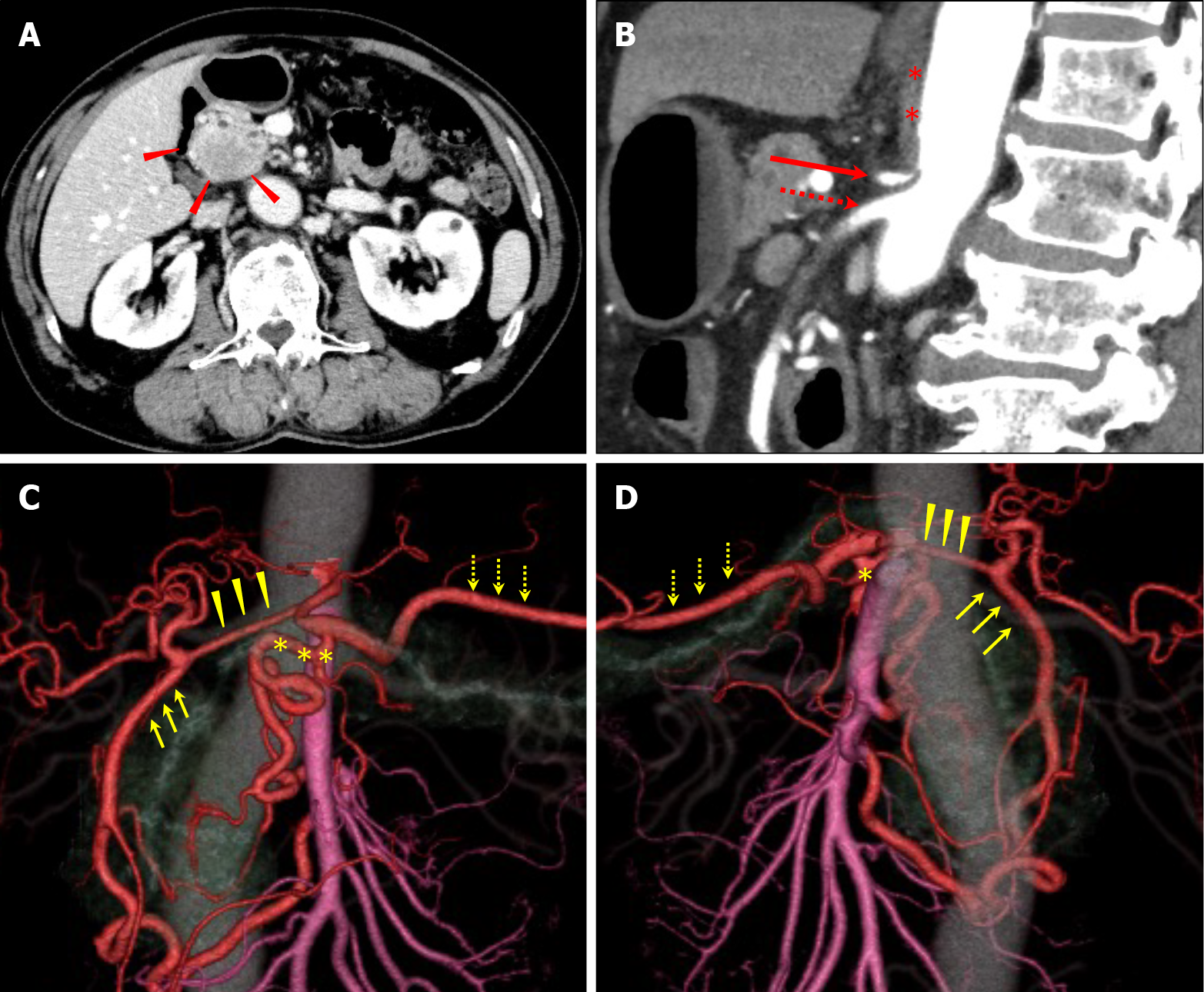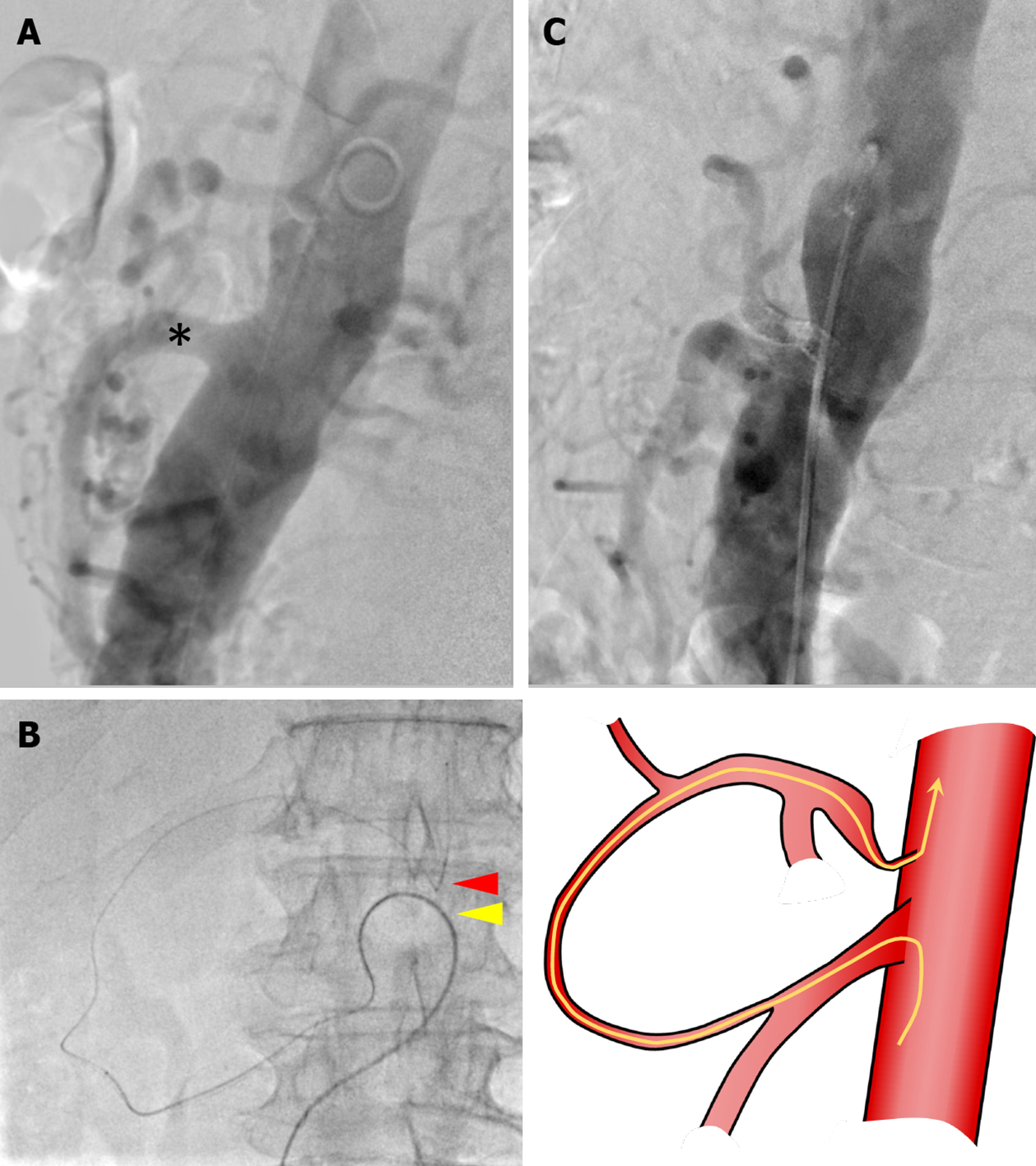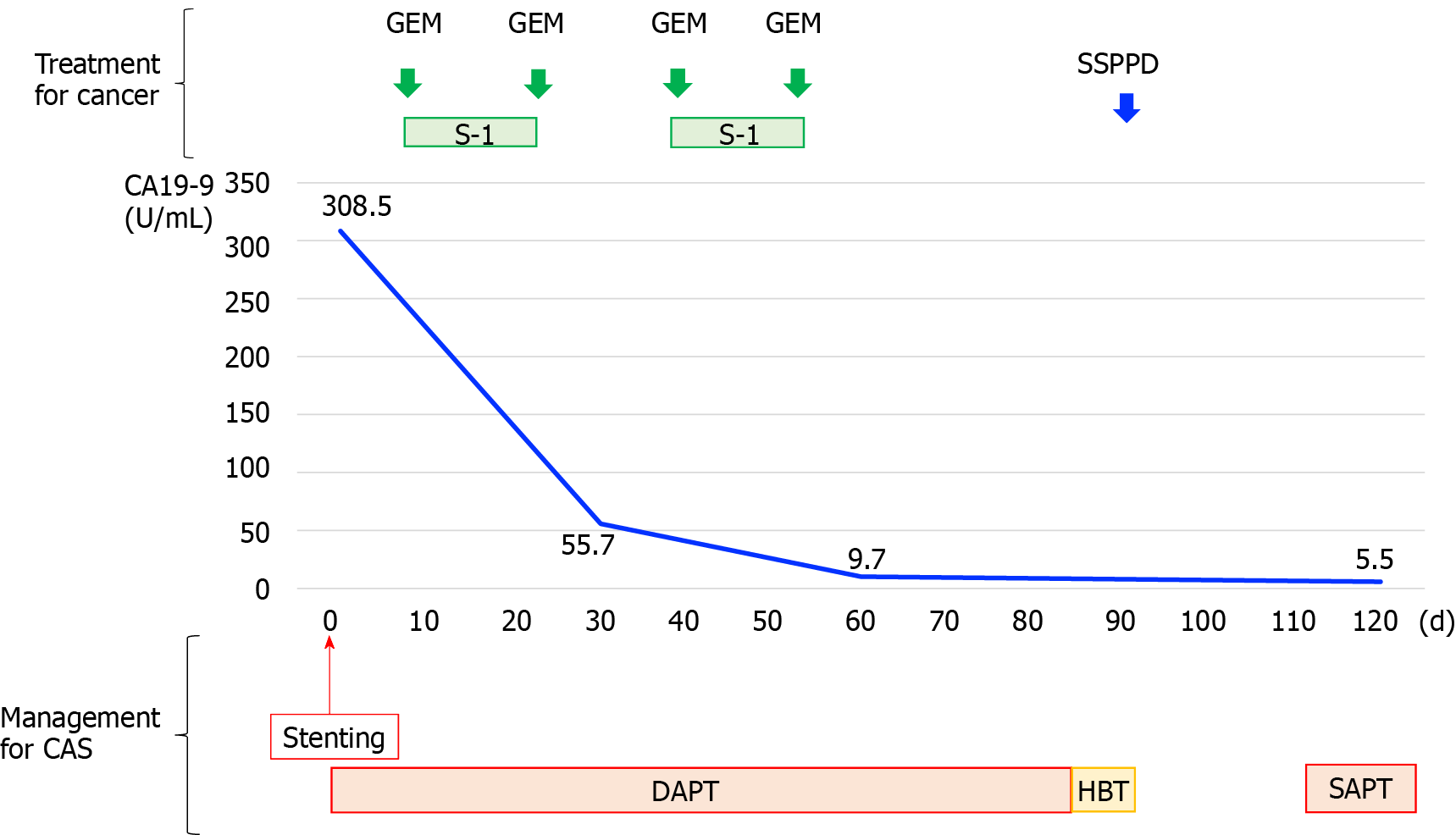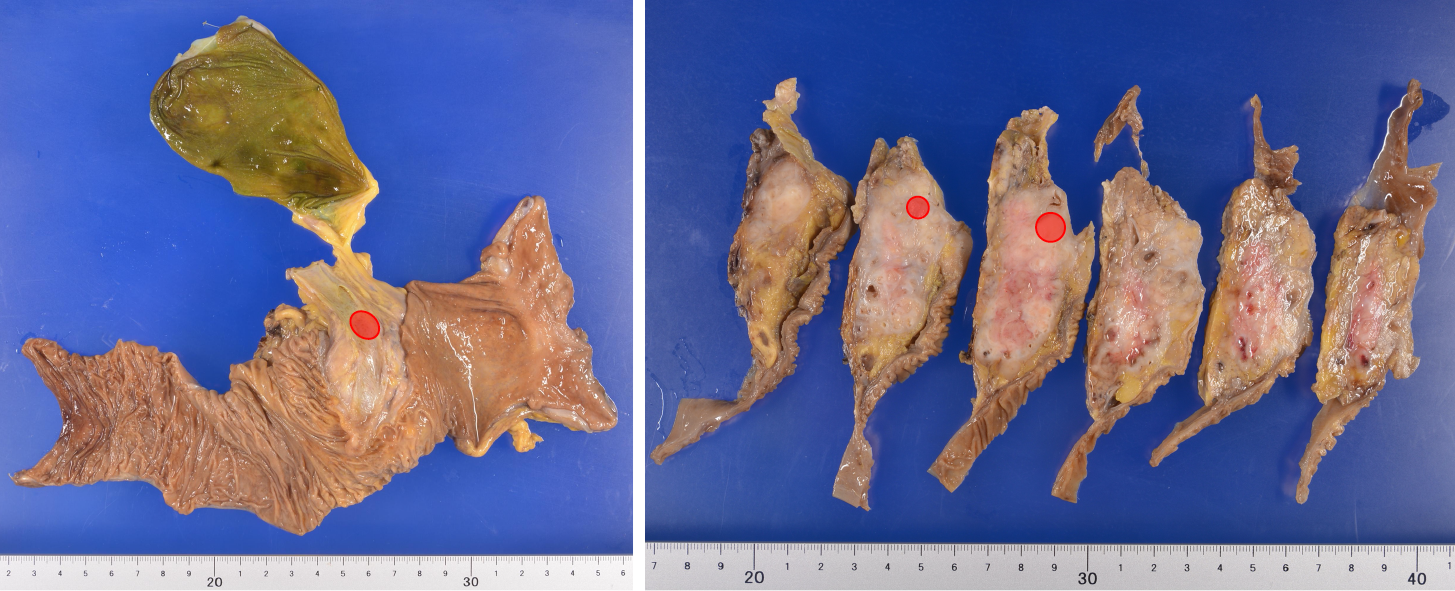Copyright
©The Author(s) 2022.
World J Gastroenterol. Feb 28, 2022; 28(8): 868-877
Published online Feb 28, 2022. doi: 10.3748/wjg.v28.i8.868
Published online Feb 28, 2022. doi: 10.3748/wjg.v28.i8.868
Figure 1 Pre-treatment imaging findings.
A: There was a tumor, with poor contrast, in the pancreatic head on computed tomography (CT) imaging. Red arrowheads: the tumor; B and C: Three-dimensional reconstruction imaging showed developed collateral pathways around the pancreatic head. One connected the superior mesenteric artery (SMA) and common hepatic artery (CHA) via the gastroduodenal artery (GDA) and another connected the SMA and splenic artery (SPA) via the dorsal pancreatic artery (DPA); D: The sagittal view of the CT showed celiac axis (CA) stenosis due to compression by MAL which developed caudally. Yellow arrows: GDA; yellow arrowheads: CHA; yellow asterisks: DPA; yellow dotted arrows: SPA; red asterisks: MAL; red arrow: CA; red dotted arrow: SMA.
Figure 2 Preoperative endovascular stenting.
A: In preoperative aortography, the superior mesenteric artery (SMA) was visualized immediately, but the celiac axis (CA) was not visualized. Black asterisks: SMA; B: The microguidewire reached the CA via a collateral pathway from the SMA using a triple coaxial system; C: Final aortography confirmed CA patency and antegrade blood flow. Red arrowhead: Root of the CA; yellow arrowhead: Root of the SMA; yellow line: Running of wire.
Figure 3 Clinical course timeline.
DAPT: Double-antiplatelet therapy; HBT: Heparin-bridging therapy; SAPT: Single-antiplatelet therapy; CA19-9: Carbohydrate antigen 19-9; GEM: Gemcitabine; SSPPD: Subtotal stomach preserving pancreaticoduodenectomy.
Figure 4 Intraoperative view and postoperative computed tomography images.
A: Subtotal stomach preserving pancreaticoduodenectomy was performed. White arrowhead: stump of gastroduodenal artery; B and C: Postoperative computed tomography imaging confirmed patency of the celiac axis.
Figure 5 Pathological findings.
Tumor mapping on the divided surface of specimens. The resected specimen showed a shrunken invasive tumor with a 12-mm diameter in the pancreatic head. Red circle: Viable tumor site.
- Citation: Yoshida E, Kimura Y, Kyuno T, Kawagishi R, Sato K, Kono T, Chiba T, Kimura T, Yonezawa H, Funato O, Kobayashi M, Murakami K, Takagane A, Takemasa I. Treatment strategy for pancreatic head cancer with celiac axis stenosis in pancreaticoduodenectomy: A case report and review of literature. World J Gastroenterol 2022; 28(8): 868-877
- URL: https://www.wjgnet.com/1007-9327/full/v28/i8/868.htm
- DOI: https://dx.doi.org/10.3748/wjg.v28.i8.868













